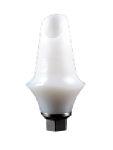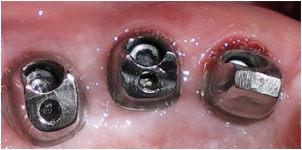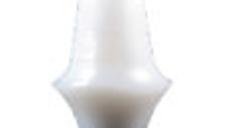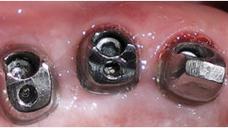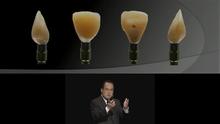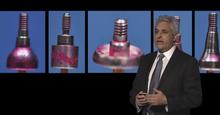-
0
Patient Assessment
- 0.1 Patient Demand
- 0.2 Anatomical location
-
0.3
Patient History
- 2.1 General patient history
- 2.2 Local history
-
0.4
Risk Assessment
- 3.1 Risk Assessment Overview
- 3.2 Age
- 3.3 Patient Compliance
- 3.4 Smoking
- 3.5 Drug Abuse
- 3.6 Recreational Drug and Alcohol Abuse
- 3.7 Condition of Natural Teeth
- 3.8 Parafunctions
- 3.9 Diabetes
- 3.10 Anticoagulants
- 3.11 Osteoporosis
- 3.12 Bisphosphonates
- 3.13 MRONJ
- 3.14 Steroids
- 3.15 Radiotherapy
- 3.16 Risk factors
-
1
Diagnostics
-
2
Treatment Options
-
2.1
Treatment planning
- 0.1 Non-implant based treatment options
- 0.2 Treatment planning conventional, model based, non-guided, semi-guided
- 0.3 Digital treatment planning
- 0.4 NobelClinician and digital workflow
- 0.5 Implant position considerations overview
- 0.6 Soft tissue condition and morphology
- 0.7 Site development, soft tissue management
- 0.8 Hard tissue and bone quality
- 0.9 Site development, hard tissue management
- 0.10 Time to function
- 0.11 Submerged vs non-submerged
- 0.12 Healed or fresh extraction socket
- 0.13 Screw-retained vs. cement-retained
- 0.14 Angulated Screw Channel system (ASC)
- 2.2 Treatment options esthetic zone
- 2.3 Treatment options posterior zone
- 2.4 Comprehensive treatment concepts
-
2.1
Treatment planning
-
3
Treatment Procedures
-
3.1
Treatment procedures general considerations
- 0.1 Anesthesia
- 0.2 peri-operative care
- 0.3 Flap- or flapless
- 0.4 Non-guided protocol
- 0.5 Semi-guided protocol
- 0.6 Guided protocol overview
- 0.7 Guided protocol NobelGuide
- 0.8 Parallel implant placement considerations
- 0.9 Tapered implant placement considerations
- 0.10 3D implant position
- 0.11 Implant insertion torque
- 0.12 Intra-operative complications
- 0.13 Impression procedures, digital impressions, intraoral scanning
- 3.2 Treatment procedures esthetic zone surgical
- 3.3 Treatment procedures esthetic zone prosthetic
- 3.4 Treatment procedures posterior zone surgical
- 3.5 Treatment procedures posterior zone prosthetic
-
3.1
Treatment procedures general considerations
-
4
Aftercare
Abutment and material selection for provisionalization, esthetic zone
Key points
- Key considerations to determine when provisional placement is appropriate.
- Choices of abutment, and relationship to adjacent teeth or implants.
- Soft tissue management.
Key Considerations
The first choice the clinician will be faced with once the implant is placed is to whether to immediate load the implant. This decisions is related to implant stability, implant relationship to hard and soft tissue, esthetics, functional demands, occlusion, patient compliance, and whether the final or provisional abutment will be placed at the time of surgery. If the implant is stable as determined by torque values (or other objective criteria) entertaining the placement of the provisional should be considered. If the stability is questionable then the implant should be allowed to undergo the normal integration phase prior to proceeding.
Provisionalization has advantages. It will maintain the soft tissue profile in an immediate placement scenario. In an edentulous site provisionalization will enable the molding of the soft tissue to begin. If a final abutment can be placed at the same time and the provisional, this will result is the most stable soft tissue architecture. The possibility of achieving soft tissue “attachment” to the abutment is also maximized by taking this approach.
If considerable soft-tissue molding is necessary, a series of temporary abutments, each a little larger than the last, can gently create the best possible emergence profile. This can be accomplished by adding resin to the temporary abutment at each recall visit.
Abutment Choice
The materials available for the abutment are varied. Custom abutment design allows for the choice of different materials that are either metal, ceramic, or a ceramic abutment with a metal connection. The choice of which one to use is dependent upon an number of factors including but not limited to: position in the oral cavity, soft tissue profile, adjacent teeth or implants, opposing arch, requirements of material strength, inter arch distance, and the choice of material for the final restoration. The fabrication of these abutments can be accomplished by conventional impression procedures or scanning of the implant position and orientation through the use of scan bodies.
With proper presurgical planning and design a custom prefabricated abutment can be fabricated along with the provisional and placed at the time of surgery. This can also be accomplished with stock abutments. Since esthetics are critical in the anterior zone the ability to design anatomical abutments that replicate tooth preparations will maximize the soft tissue development. This can be accomplished with stock abutments and careful development of the provisional contours. There are a wide range of materials for this, and the clinician should have a thorough understanding of the one(s) being utilized. Surface contours, the ability to have a highly polished surface, strength under modified function, and esthetics need to balanced.
Figure 1: Ceramic abutments with Ceramic substructures Figure 2: Screw rertained metal abutments (left), one abutment does not allow for screw retention
Soft Tissue Management
The restorative dentist must understand the relationship between the interproximal contacts and proximity to adjacent implants / teeth to create the ideal papilla development. Careful adherence to these well documented principles will yield the desired esthetics assuming the implant placement is correctly oriented.
In all instances the goal is to achieve the ideal esthetics and set up an environment that will result in a final restoration that fulfills all the requirements for the patient.
Additional resources
Additional external resources
Digital Textbooks
The combination of research and long-term clinical experience have led to the development of generally accepted guidelines for the diagnosis, planning, design and clinical procedures to achieve optimal restoration of single implants.

